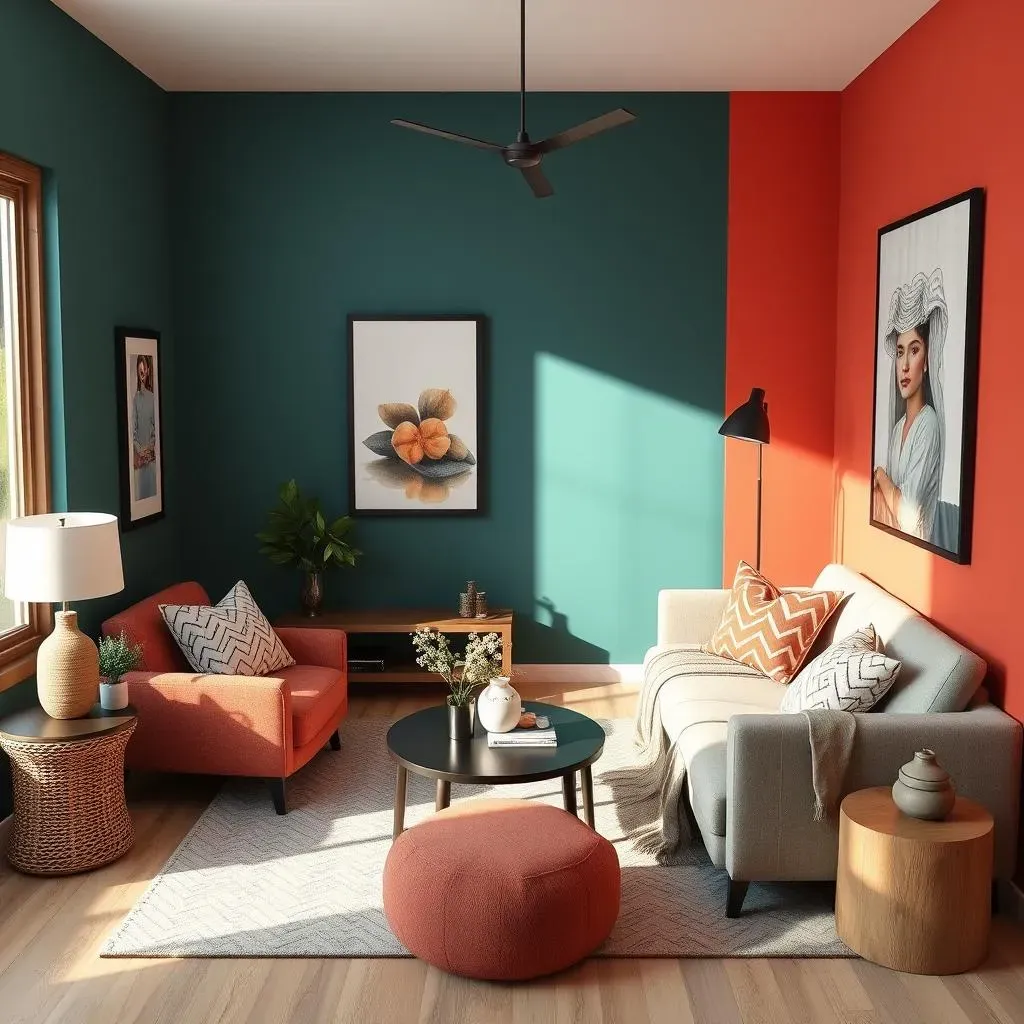Table of Contents
Stuck with a small living room that feels cramped? Want to inject some personality without a major overhaul? Then let's talk accent wall color ideas for small living room. An accent wall is a game-changer, a relatively simple way to add depth, character, and a focal point to any space, especially those that are a little on the petite side. It's about creating a deliberate design statement that draws the eye and makes your living room feel more dynamic and inviting.
Small Living Room Accent Wall Color Ideas: Finding Your Perfect Shade
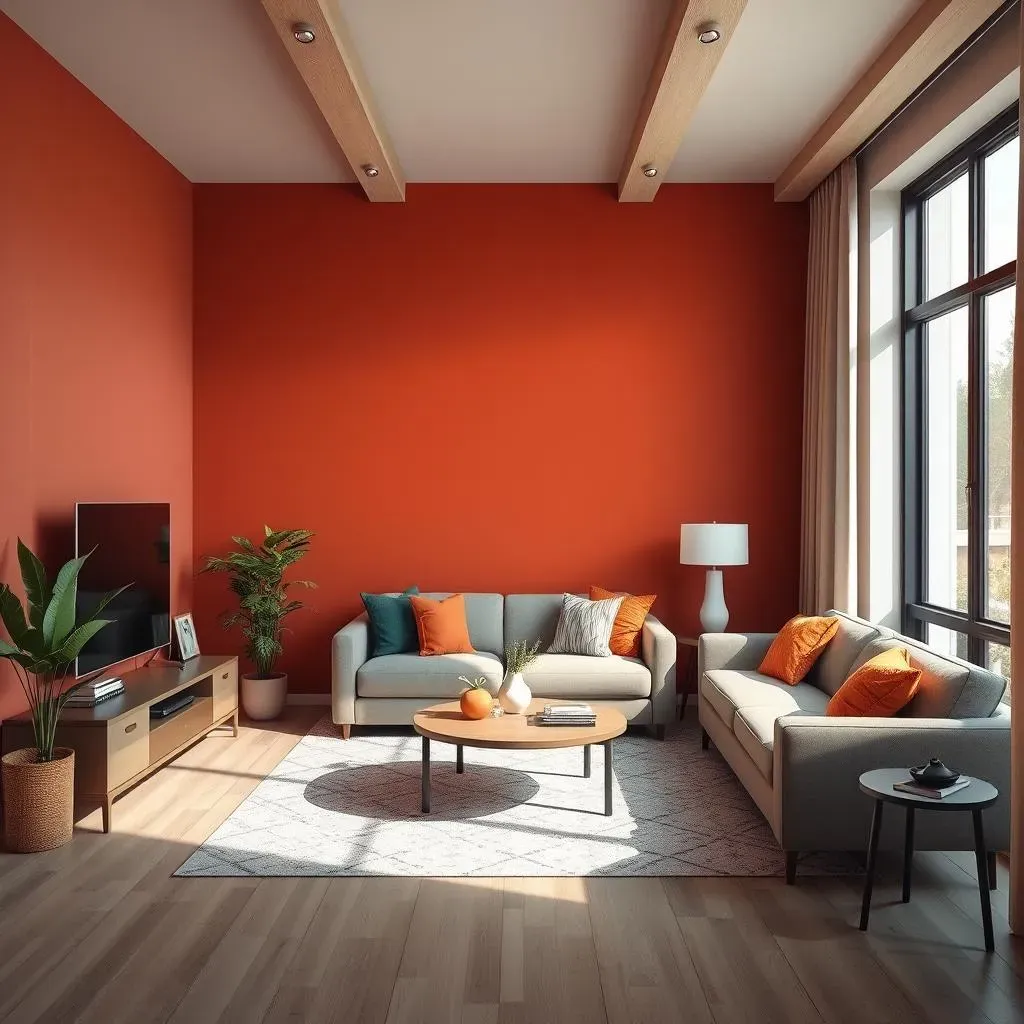
Small Living Room Accent Wall Color Ideas: Finding Your Perfect Shade
Understanding Your Space
so you're thinking accent wall, awesome! But before you even crack open a paint can, let's take a good look at your small living room. What kind of natural light are we talking about? Is it a sun-drenched space or more of a cozy, dimly lit nook? This makes a HUGE difference in how a color will actually appear on your wall. Also, what's the overall vibe? Are you going for modern and minimalist, bohemian chic, or something totally different? Your accent wall should complement, not clash with, your existing decor.
Consider the architecture too. Do you have any interesting features like a fireplace, built-in shelving, or a particularly cool window? These can be natural focal points that you might want to highlight with your accent wall. Don't just pick a wall at random; think about how it fits into the overall flow of the room. For example, a long, narrow wall can visually expand with the right color, while a shorter wall can become a cozy backdrop for your sofa.
Color Psychology 101
Now for the fun part: color! But choosing a color is more than just picking your favorite hue. Colors evoke emotions and create different moods. Think about how you want your small living room to feel. Do you want it to be a relaxing sanctuary, a vibrant entertainment space, or something in between? Blues and greens are generally calming and serene, while yellows and oranges are more energetic and uplifting. Reds can add drama and warmth, but can also be overwhelming in a small space if not used carefully.
Don't be afraid to experiment with different shades and tones. A muted, dusty blue can be just as impactful as a bold, vibrant teal. The key is to choose a color that you love and that complements the other elements in your room. And remember, you can always test out paint samples on a small area of the wall before committing to the entire project. Trust me, it's worth the extra step!
Color | Associated Mood | Best For |
|---|---|---|
Blue | Calming, Serene | Relaxing spaces, bedrooms |
Green | Refreshing, Natural | Living rooms, offices |
Yellow | Cheerful, Optimistic | Kitchens, entryways |
Red | Passionate, Energetic | Dining rooms, accent pieces |
Bold & Beautiful: Accent Wall Colors That Make a Statement in Small Spaces
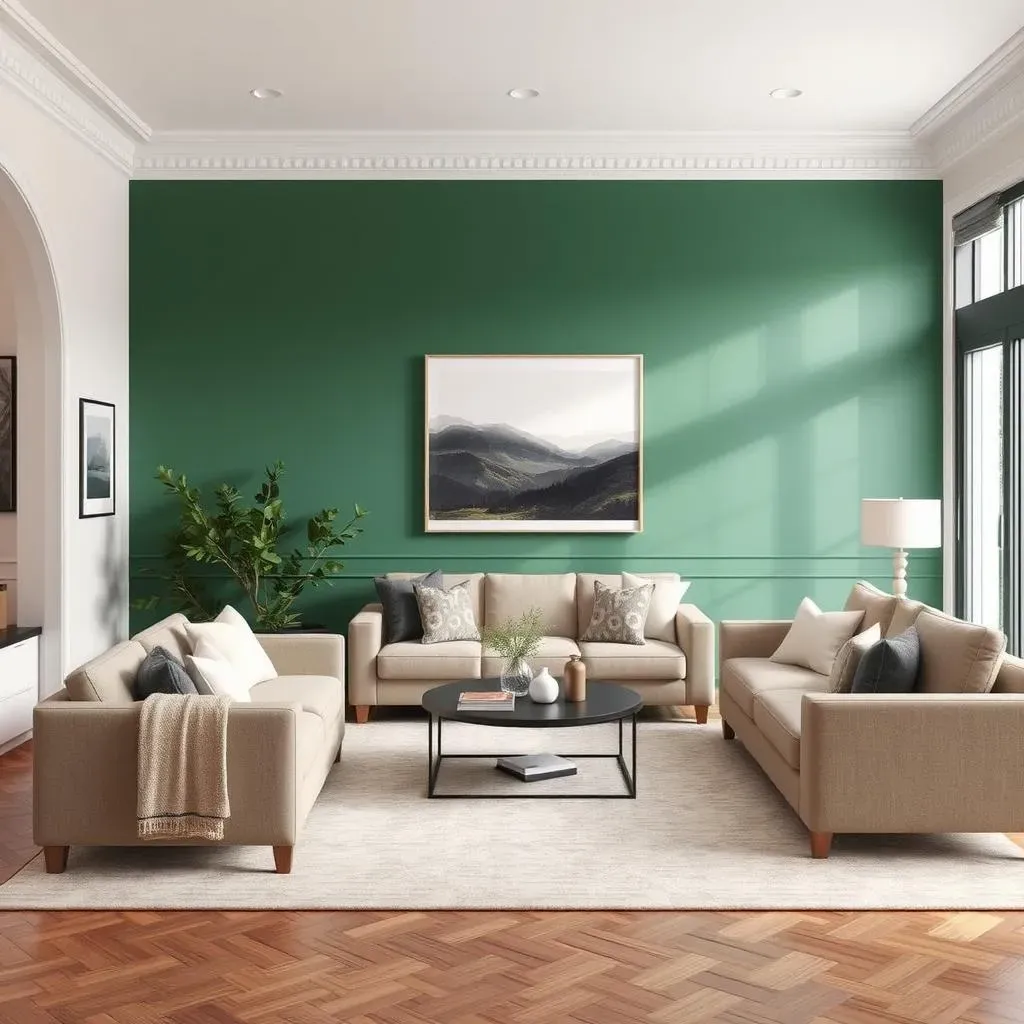
Bold & Beautiful: Accent Wall Colors That Make a Statement in Small Spaces
so you want to make a statement, even in a small space? I love it! Forget playing it safe – let's talk about some bold accent wall colors that can really transform your living room. We're not just talking about a splash of color; we're talking about creating a focal point that demands attention. Think deep jewel tones like emerald green, sapphire blue, or amethyst purple. These colors add richness and depth, making a small room feel more luxurious. Or, if you're feeling adventurous, go for a vibrant, saturated hue like a fiery coral, a sunny yellow, or a daring teal. These colors inject energy and personality into the space, making it feel more lively and inviting.
But here's the key: balance. If you're going bold on the accent wall, keep the other walls neutral. Think soft whites, light grays, or creamy beiges. This will prevent the room from feeling overwhelming and allow the accent wall to truly shine. Also, consider the existing furniture and accessories in your room. Make sure the accent wall color complements, not clashes with, your sofa, rugs, and artwork. The goal is to create a cohesive and stylish space that reflects your personality.
One of my favorite tricks for small spaces is to use a dark accent wall. I know it sounds counterintuitive, but hear me out. A dark color, like charcoal gray or navy blue, can actually make a wall recede, creating the illusion of more depth. This is especially effective in a long, narrow room. Just be sure to balance the darkness with plenty of light – both natural and artificial. Add some bright artwork, light-colored furniture, and plenty of lamps to keep the space from feeling gloomy.
And don't forget about texture! A bold color looks even more amazing when paired with a textured finish. Consider adding a textured wallpaper, a faux brick treatment, or even a simple coat of Venetian plaster. This will add another layer of visual interest and make your accent wall truly stand out. Just remember to keep the texture subtle in a small space; you don't want it to feel too busy or overwhelming.
- Emerald Green: Luxurious and Sophisticated
- Sapphire Blue: Calm and Elegant
- Fiery Coral: Energetic and Playful
- Charcoal Gray: Modern and Dramatic
- Sunny Yellow: Cheerful and Uplifting
Creating Depth and Dimension: Accent Wall Techniques for Small Living Rooms
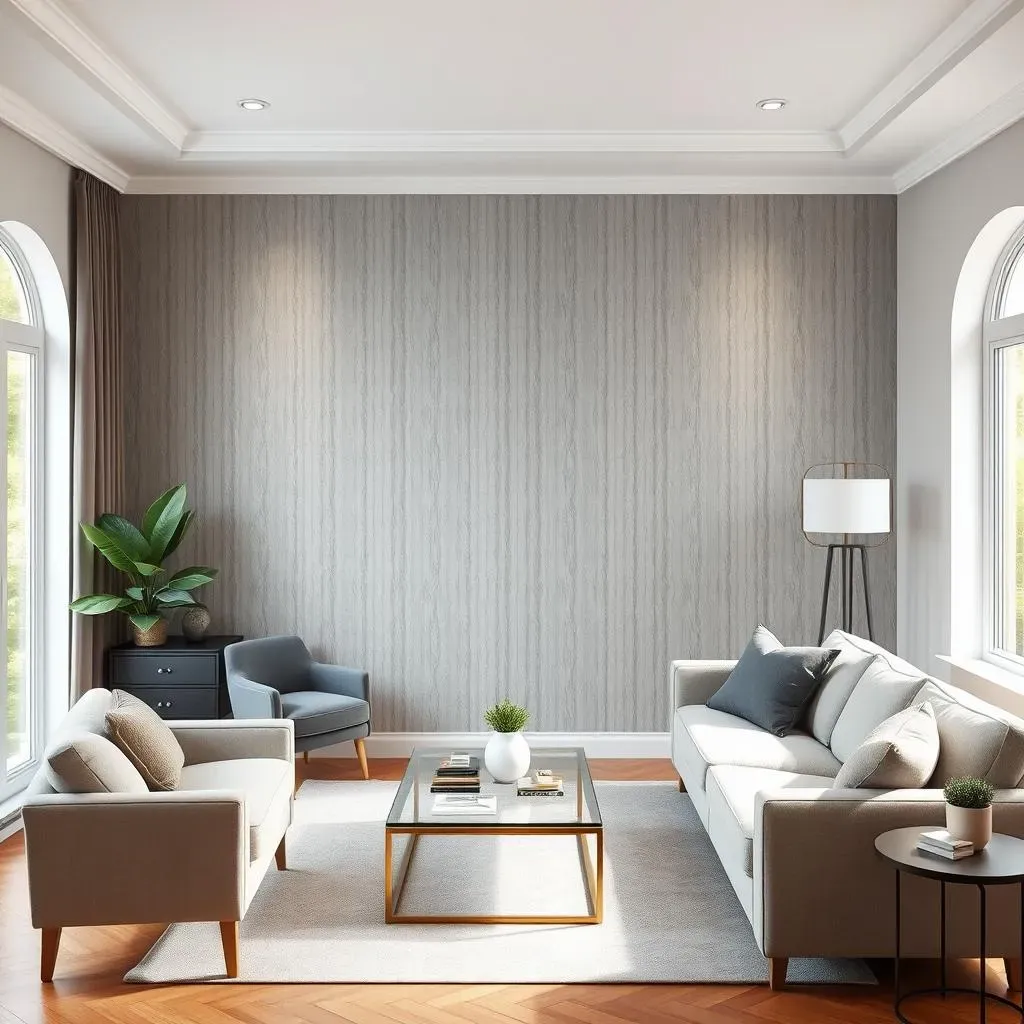
Creating Depth and Dimension: Accent Wall Techniques for Small Living Rooms
Vertical Stripes: Height is Your Friend
let's get strategic. Small rooms often feel boxy, right? One of the oldest tricks in the book is using vertical stripes on your accent wall. It's like a visual illusion that tricks the eye into seeing more height. You instantly make the room feel taller. You don't have to go full-on Beetlejuice with black and white, though! Think subtle variations in tone within the same color family. For example, a light gray alternating with a slightly darker gray. Or even better, use a textured wallpaper with a vertical pattern. The texture adds another layer of interest, preventing the stripes from feeling too flat.
The width of the stripes matters too. Thinner stripes create a more subtle effect, while wider stripes are bolder and more dramatic. In a small space, I tend to lean towards slightly thinner stripes to avoid overwhelming the room. And remember to consider the overall style of your living room. Vertical stripes can work in almost any style, from modern to traditional, but the specific colors and textures you choose will make all the difference.
Color Blocking: Geometric Fun
Feeling a little more adventurous? Then let's talk color blocking! This is where you divide your accent wall into different geometric shapes, each painted a different color. It's a fantastic way to add a modern, playful touch to your small living room. The key here is to keep the color palette cohesive. Choose colors that complement each other, rather than clash. Think analogous colors (colors that are next to each other on the color wheel) or complementary colors (colors that are opposite each other on the color wheel). And don't be afraid to incorporate some neutral tones to balance out the bolder hues.
The shapes you choose are also important. Simple squares and rectangles are always a good choice, but you can also experiment with triangles, circles, or even more abstract shapes. Just make sure the overall design feels balanced and intentional. I always recommend sketching out your design on paper before you start painting. This will help you visualize the finished product and avoid any potential disasters. And don't forget to use painter's tape to create clean, crisp lines between the different colors. This is essential for achieving a professional-looking finish.
Ombre Effect: Gradient Goodness
For a softer, more subtle approach, consider an ombre effect on your accent wall. This involves gradually blending one color into another, creating a seamless gradient. It's a beautiful way to add depth and dimension to your small living room without being too overwhelming. You can start with a light color at the top of the wall and gradually transition to a darker color at the bottom, or vice versa. Or, you can blend two different colors together, like a soft blue fading into a creamy white.
The key to a successful ombre effect is to blend the colors seamlessly. This requires a little bit of practice and patience, but it's definitely achievable with a few simple tools. Start by painting the entire wall with your base color. Then, using a damp sponge or brush, gradually add the second color, blending it into the base color as you go. You may need to apply several coats to achieve the desired effect. And don't be afraid to experiment! The beauty of an ombre effect is that it's inherently imperfect, so don't worry too much about getting it exactly right.
- Vertical Stripes: Create the illusion of height.
- Color Blocking: Add a modern, playful touch.
- Ombre Effect: Create a soft, subtle gradient.
- Horizontal Stripes: Visually widen a narrow room.
- Geometric Patterns: Add visual interest and depth.
DIY Accent Wall Projects: Easy Ways to Transform Your Small Living Room
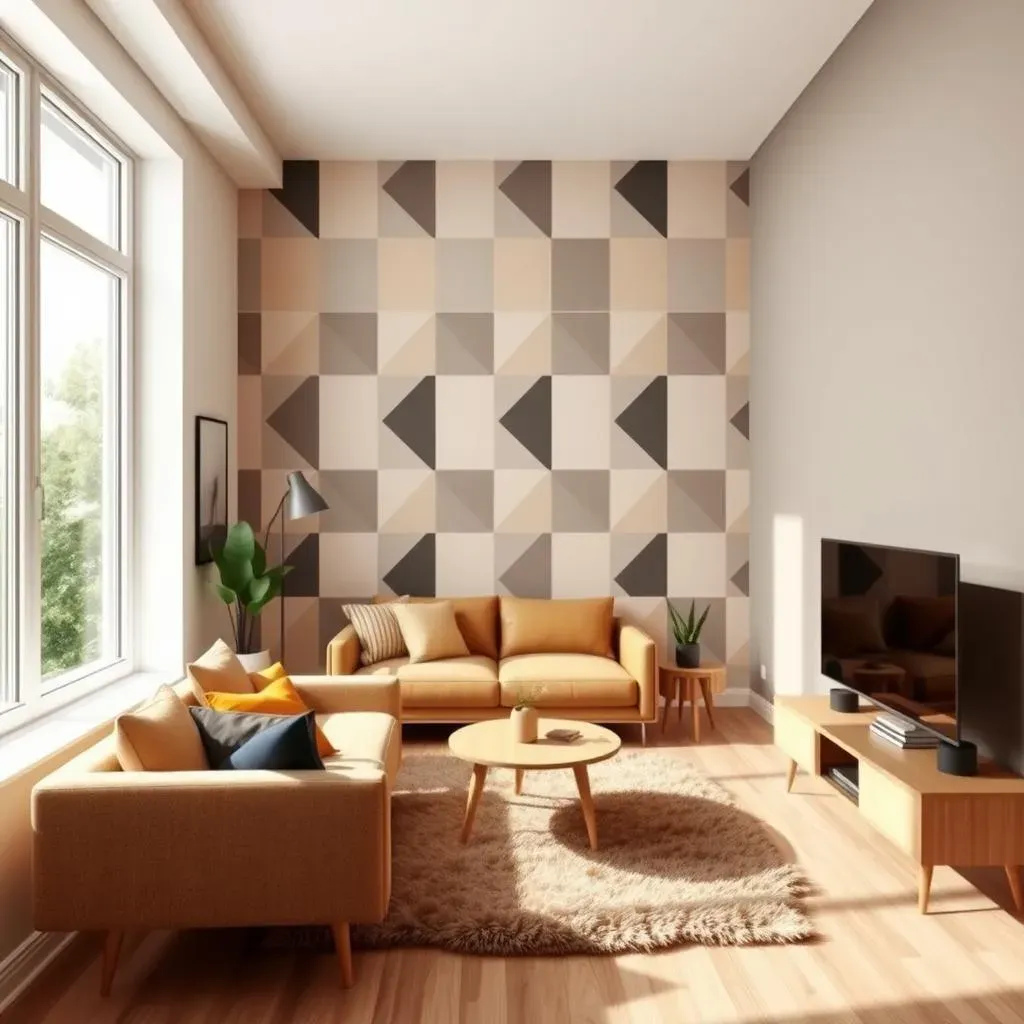
DIY Accent Wall Projects: Easy Ways to Transform Your Small Living Room
Wallpaper Wonders
so you're itching for a change, but maybe you're not feeling the whole painting thing? I get it! That's where wallpaper comes in, and trust me, it's not your grandma's floral print anymore. We're talking about seriously stylish, easy-to-install options that can completely transform your small living room. Think bold geometric patterns, textured grasscloth, or even removable wallpaper that's perfect for renters. The best part? You can get a huge impact with minimal effort. Just measure your wall, order your wallpaper, and follow the instructions. Most wallpapers these days are peel-and-stick, making the process a breeze. And if you ever get tired of it, you can simply peel it off without damaging your walls. It's like a commitment-free makeover!
When choosing a wallpaper for a small space, consider the scale of the pattern. Large, overwhelming patterns can make a small room feel even smaller. Instead, opt for smaller, more delicate patterns that won't overpower the space. Vertical stripes, as we discussed earlier, are also a great choice for adding height. And don't be afraid to experiment with different textures. A textured wallpaper can add depth and dimension to your accent wall, making it feel more luxurious and inviting.
Textured Treatment Takeover
Want to add some serious drama to your small living room? Then let's talk about textured accent walls! This is where you go beyond paint and wallpaper and start experimenting with different materials to create a unique, tactile surface. Think faux brick, wood planks, or even fabric panels. These materials add depth, dimension, and visual interest to your accent wall, making it a true focal point. Faux brick is a great option for adding a rustic, industrial touch to your living room. You can buy pre-made faux brick panels that are easy to install with adhesive, or you can create your own brick effect using textured paint and stencils. Wood planks are another popular choice for creating a warm, inviting atmosphere. You can use reclaimed wood for a more rustic look, or you can buy new wood planks and stain them to match your existing decor.
Fabric panels are a softer, more luxurious option for adding texture to your accent wall. You can create your own fabric panels by stretching fabric over wooden frames and attaching them to the wall with adhesive or nails. Choose a fabric that complements your existing decor and adds a touch of elegance to the space. When working with textured materials, it's important to consider the overall scale of the room. Too much texture can make a small space feel overwhelming, so use it sparingly and balance it with smooth surfaces.
- Peel-and-Stick Wallpaper: Easy to install and remove.
- Faux Brick Panels: Add a rustic, industrial touch.
- Wood Planks: Create a warm, inviting atmosphere.
- Fabric Panels: Add a soft, luxurious touch.
- Textured Paint: Create a subtle, tactile surface.
Accent Wall Color Ideas for Small Living Room: FAQs and Expert Tips

Accent Wall Color Ideas for Small Living Room: FAQs and Expert Tips
Choosing the Right Wall: The Million-Dollar Question
so you're all fired up about accent wall color ideas for small living room, but which wall do you actually paint? It's a common question! Generally, you want to pick the wall that's the natural focal point of the room. This could be the wall behind your sofa, the wall with a fireplace, or even just the longest wall in the room. Avoid painting a wall with a lot of windows or doors, as it can break up the visual impact. And definitely don't paint a small, awkward wall just because it's there. The goal is to create a sense of balance and harmony, not to draw attention to a weird corner.
Think about the architecture of your room too. Do you have any interesting features like a built-in bookshelf or a unique architectural detail? Highlighting these features with an accent wall can really elevate the space. And don't be afraid to experiment! Try taping off different walls with painter's tape and visualizing how they would look with a different color. Sometimes the best choice is the one you least expect.
How Dark or Light Should You Go?
This is where things get interesting! The level of contrast between your accent wall and the other walls in your small living room can dramatically affect the overall feel of the space. A high-contrast accent wall, like a dark navy blue against a light gray, will create a bold, dramatic statement. This is a great choice if you want to add a lot of personality and energy to the room. However, it can also make the room feel smaller if not done carefully. On the other hand, a low-contrast accent wall, like a soft sage green against a creamy white, will create a more subtle, calming effect. This is a good choice if you want to add a touch of color without overwhelming the space.
Consider the amount of natural light in your room when making this decision. If your living room is already dark, a dark accent wall can make it feel even smaller and more gloomy. In this case, it's better to opt for a lighter, brighter color that will reflect light and make the room feel more open. And remember, you can always test out paint samples on your wall before committing to the entire project. This will help you see how the color looks in different lighting conditions and ensure that you're happy with the final result.
Contrast Level | Effect | Best For |
|---|---|---|
High Contrast | Bold, Dramatic | Adding personality, energetic spaces |
Low Contrast | Subtle, Calming | Creating a relaxing atmosphere |
Monochromatic | Sophisticated, Elegant | Modern, minimalist spaces |
Painting Order: Accent Wall First or Last?
Ah, the age-old question! There's no hard and fast rule here, but here's my take. I usually recommend painting the accent wall last. Why? Because it's easier to match the other walls to the accent wall than the other way around. If you paint the accent wall first, you'll have to carefully choose a coordinating color for the other walls, which can be tricky. But if you paint the other walls first, you can simply pick an accent wall color that complements them perfectly. Plus, it gives you a chance to live with the base color for a few days and see how it looks in different lighting conditions before making a final decision.
Of course, there are exceptions to every rule. If you're using a very specific or custom color for your accent wall, it might be easier to paint it first and then have the other colors matched to it. And if you're using wallpaper or another type of textured treatment on your accent wall, you'll obviously need to install that before painting the other walls. Ultimately, the best approach is the one that works best for you and your specific project. Just remember to take your time, plan carefully, and don't be afraid to ask for help if you need it!
Wrapping Up: Your Small Living Room, Boldly Accented
So, there you have it – a wealth of accent wall color ideas to transform your small living room from drab to fab! Remember, the key is to choose a color that speaks to you, complements your existing décor, and enhances the overall feel of the space. Don't be afraid to experiment and get creative; after all, it's just paint! With a little planning and inspiration, you can create an accent wall that not only adds visual interest but also makes your small living room feel larger, more inviting, and uniquely yours. Now go forth and paint!
